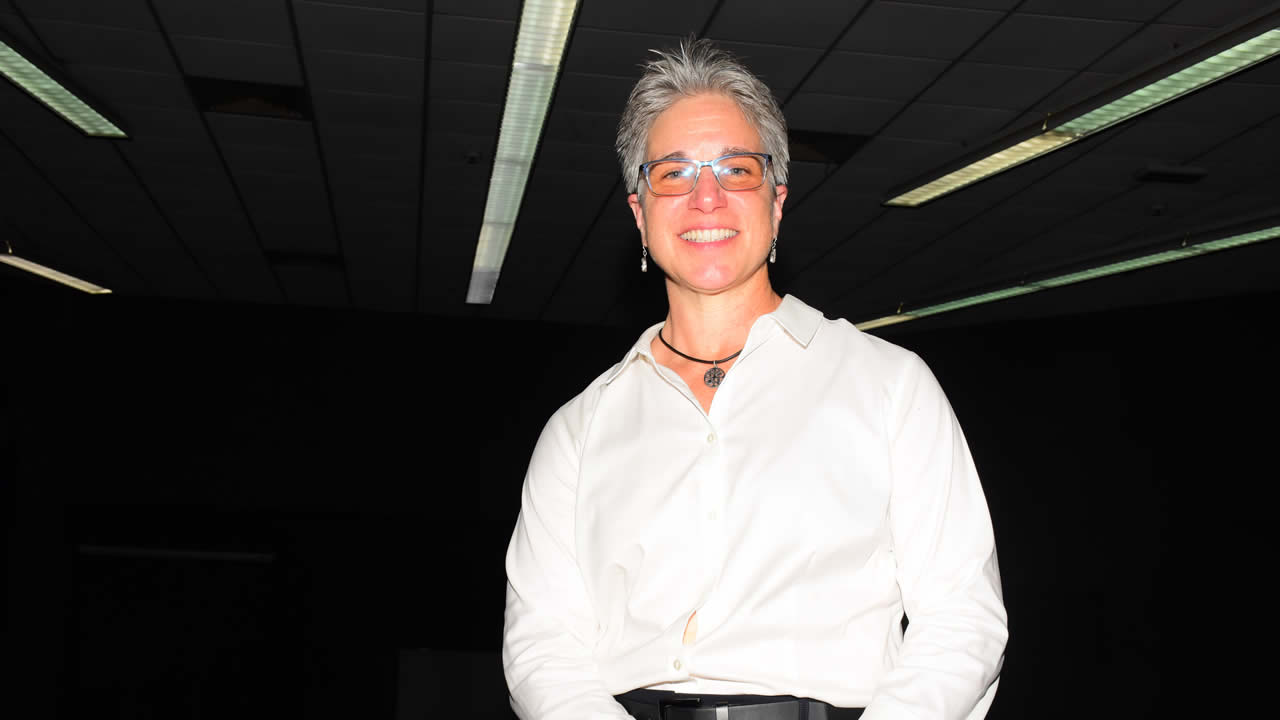
Mauritius received the visit of the world renowned advocate for animal welfare and biomedical progress, Dr Cindy Buckmaster, this week. A talk on the topic headed by the latter was conjointly organised by the Faculty of Science, University of Mauritius and Bioculture (Mauritius) Ltd on Wednesday 30th January. Dr Cindy Buckmaster tells us why animal studies are necessary to support the biomedical progress.
The coming of Dr Cindy Buckmaster, active and passionate advocate for animal welfare and biomedical progress, was a first in Mauritius. Director of the research animal care program at Baylor College of Medicine in Houston, Texas, USA, Dr Cindy Buckmaster regularly speaks on the necessary role animals play in biomedical progress. Invited by the Faculty of Science, University of Mauritius and Bioculture (Mauritius) Ltd, the latter delivered a talk on the topic “Medical Breakthroughs: Is research with animals still necessary?” on Wednesday 30th January at the University of Mauritius.
In an interview with News on Sunday, Dr Cindy Buckmaster indeed addressed the major key question of why animal studies are significant to support the biomedical progress. “In order to understand and treat disease, we must first understand how biological systems function when healthy on gross, microscopic and molecular levels. Biological systems are incredibly complex and there is still a lot to learn about how they function on all of these levels. In many cases, it is simply not possible to study these levels of complexity in people because we cannot manipulate their genes and many of the answers we seek are in tissues that cannot be removed from people while they are alive. Studies of the brain that are necessary to inform strategies for treating Alzheimer’s Disease, for example, would require invasive experimental studies of brain function in people while alive with the understanding that they would, ultimately, end their lives willingly to permit additional studies of their brain on microscopic and molecular levels after it was removed.”
Biological function is highly conserved across species, however, and virtually every treatment and cure available today was informed by studies with animals. We owe them a tremendous amount of respect and gratitude."
She explains that the natural variability among human beings would require studies of large numbers of volunteers for statistically reliable information. “Biological function is highly conserved across species, however, and virtually every treatment and cure available today was informed by studies with animals. We owe them a tremendous amount of respect and gratitude,” stated Dr Buckmaster. When questioned what are her views regarding the fact that many around the world speak up against the use of animals for research and qualify this as being barbaric and cruel, she explains that “most people have no direct knowledge or experience with how our animals are actually treated in research settings and fall prey to misinformation and manipulation by extremist groups with personal agendas that have more to do with control and profit than animal welfare. The unfortunate reality is that research with animals is still necessary for the treatments you and I continue to demand for ourselves and our loved ones.” She utters that everyone is accountable for the fact that they are involved in biomedical research. “I invite readers to learn the truth about who cares for research animals and how they are treated by visiting the websites of Americans for Medical Progress and the AALAS Foundation.”
Animal Rights and Welfare
Dr Buckmaster confides that most people truly love animals and that she is one among them. She explains that animal rights and animal welfare are two different things and trusts that laws against animal cruelty should be rational and strictly enforced. “Animal right is a human-centric ideology that has little to do with animal welfare. It’s a short-sighted philosophy that projects the needs and sentiments of people onto animals. Most animal rights agendas are unrealistic and, ultimately, harm animals in the long run. For example, the animal rights movement is aggressively pushing to end research with animals in the US and Europe, countries with strict regulatory protections for the animals in question.”
Why does she trust that it is vital to educate people, especially the youth, on animal welfare and biomedical progress? “People can’t make truly informed decisions about how to drive biomedical progress for people or animals, now or in the future, without a complete and accurate understanding of how research with animals is done and why it is still necessary,” asserts Dr Buckmaster.
How research with animals is done
Questioned about what animals are mostly used for biomedical research and why, Dr Buckmaster declares that over 95% percent of the animals involved in research are mice. “Modern technologies allow researchers to manipulate mouse genomes in order to study the biological underpinnings of many disorders across multiple generations because these animals also produce litters every 21 days. Immune deficient models are also very popular in cancer studies because they can be implanted with a variety of human tumors that allow for more human relevant screening of potential cancer therapies.”
It, however, remains quite an enigma for most people to understand about how research with animals is conducted. To this, Dr Buckmaster replies that: “For most researchers, drug (medical) development is actually the tail end of the research process. But in order to design a drug that would be helpful, you have first to understand what is wrong with the body: What the body looks like and how it functions when it’s healthy. We still know very little how the body works, meaning at the microscopic, cellular, the genetic, and the molecular levels. All these complex levels of biology have to be understood. So, drug development relies on our understanding of the body when it is healthy. The largest part of research with animals is the understanding of the healthy system and how they actually work on these gross genetic, cellular and molecular levels. All the drugs and the treatments we have till now have been developed from really tiny clues about very small aspects of all these systems. Mice are mostly used in research but also other animals, depending on what is being evaluated. Drug development companies collect all these research conducted through decades to learn about a particular disease at different levels. This is known as Applied Research, which is trying to use that information to cure a disorder. Applied research has two stages. A drug development company develops a molecule that they think is going to fix a problem. However, before marketing it, they have to determine whether or not it is going to be safe for people. So, they test in animals. It’s called preclinical testing. If the rug is deemed safe, from there starts the longer part of the process, which is multiple stages of human clinical trials.”
During her visit, Dr Buckmaster had a tour of monkey breeding facilities at Bioculture Mauritius. “As a graduate student, I worked with monkeys and I fell completely in love with them. This was one of the best experiences of my life. To see people do so well by them was very important to me. They think through the perspective of these animals, they love these animals and are motivated by their genuine care and concern for these animals. Everything they do is designed around how to make these animals as comfortable as possible. This is critical. To have people on the front end working so carefully with these animals and preparing them to work with people that they have never met is really critical.”








